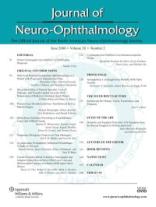| Title |
Pontine Gaze Deviation and Face Turn Relieved by Eye Muscle Surgery |
| Creator |
Türkçüo?lu, P; Aydemir, O; Oztürkmen, C; Yldrm, H |
| Affiliation |
Department of Ophthalmology, Firat University School of Medicine, Elazi?, Turkey. peykan74@yahoo.com |
| Abstract |
A 34-year-old woman developed a bilateral horizontal gaze palsy, left gaze deviation, and right face turn consequent to a pontine hemorrhage. A bilateral horizontal recession and resection of extraocular muscles in both eyes (Parks procedure) eliminated the gaze deviation and face turn. This is the first reported case in which this procedure was used to correct a face turn in a patient with bilateral horizontal gaze palsy but without ocular misalignment. |
| Subject |
Adult; Face, physiopathology; Female; Hemangioma, Cavernous, Central Nervous System, complications; Humans; Intracranial Hemorrhages, complications; Neck Muscles, innervation; Neck Muscles, physiopathology; Neural Pathways, blood supply; Neural Pathways, pathology; Neural Pathways, physiopathology; Neurosurgical Procedures; Ocular Motility Disorders, etiology; Ocular Motility Disorders, pathology; Ocular Motility Disorders, physiopathology; Oculomotor Muscles, innervation; Oculomotor Muscles, physiopathology; Oculomotor Muscles, surgery; Pons, blood supply; Pons, pathology; Pons, physiopathology; Spasm, etiology; Spasm, physiopathology; Torticollis, etiology; Torticollis, pathology; Torticollis, physiopathology; Treatment Outcome |
| Date |
2008-06 |
| Format |
application/pdf |
| Publication Type |
Journal Article |
| Collection |
Neuro-Ophthalmology Virtual Education Library: Journal of Neuro-Ophthalmology Archives: https://novel.utah.edu/jno/ |
| Publisher |
Lippincott, Williams & Wilkins |
| Holding Institution |
Spencer S. Eccles Health Sciences Library, University of Utah |
| Rights Management |
© North American Neuro-Ophthalmology Society |
| Setname |
ehsl_novel_jno |
| ID |
225685 |
| Reference URL |
https://collections.lib.utah.edu/ark:/87278/s6r246hr/225685 |



















